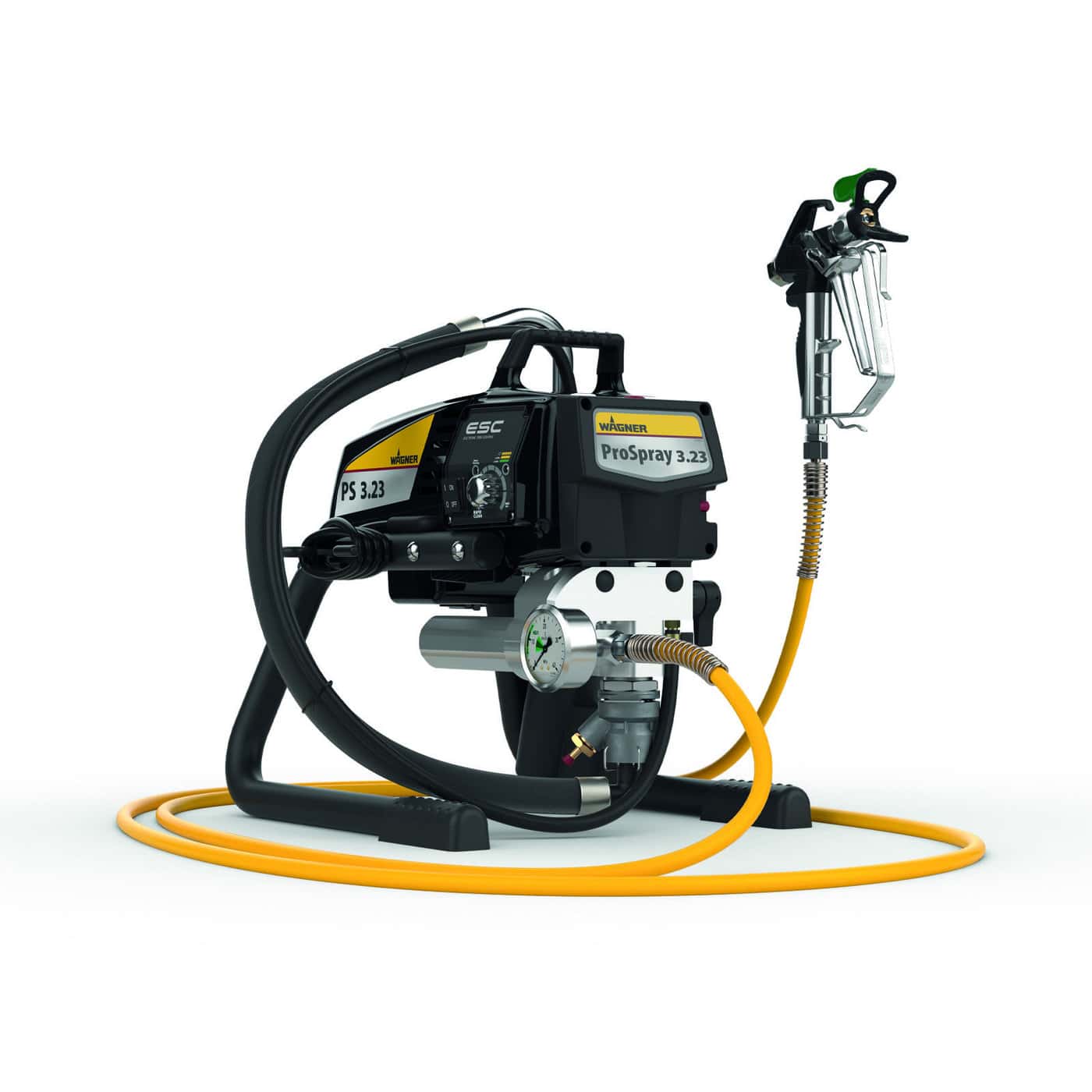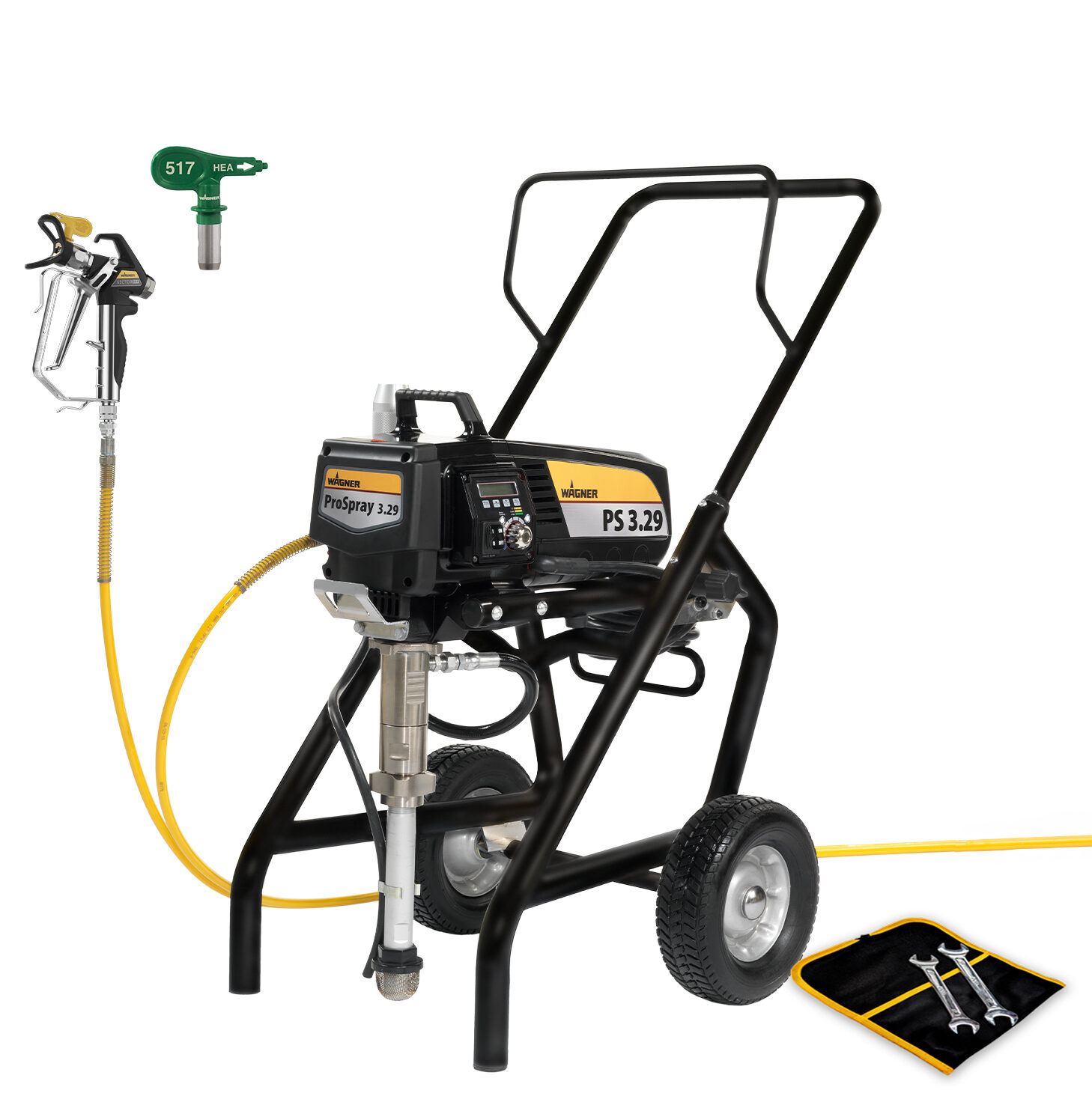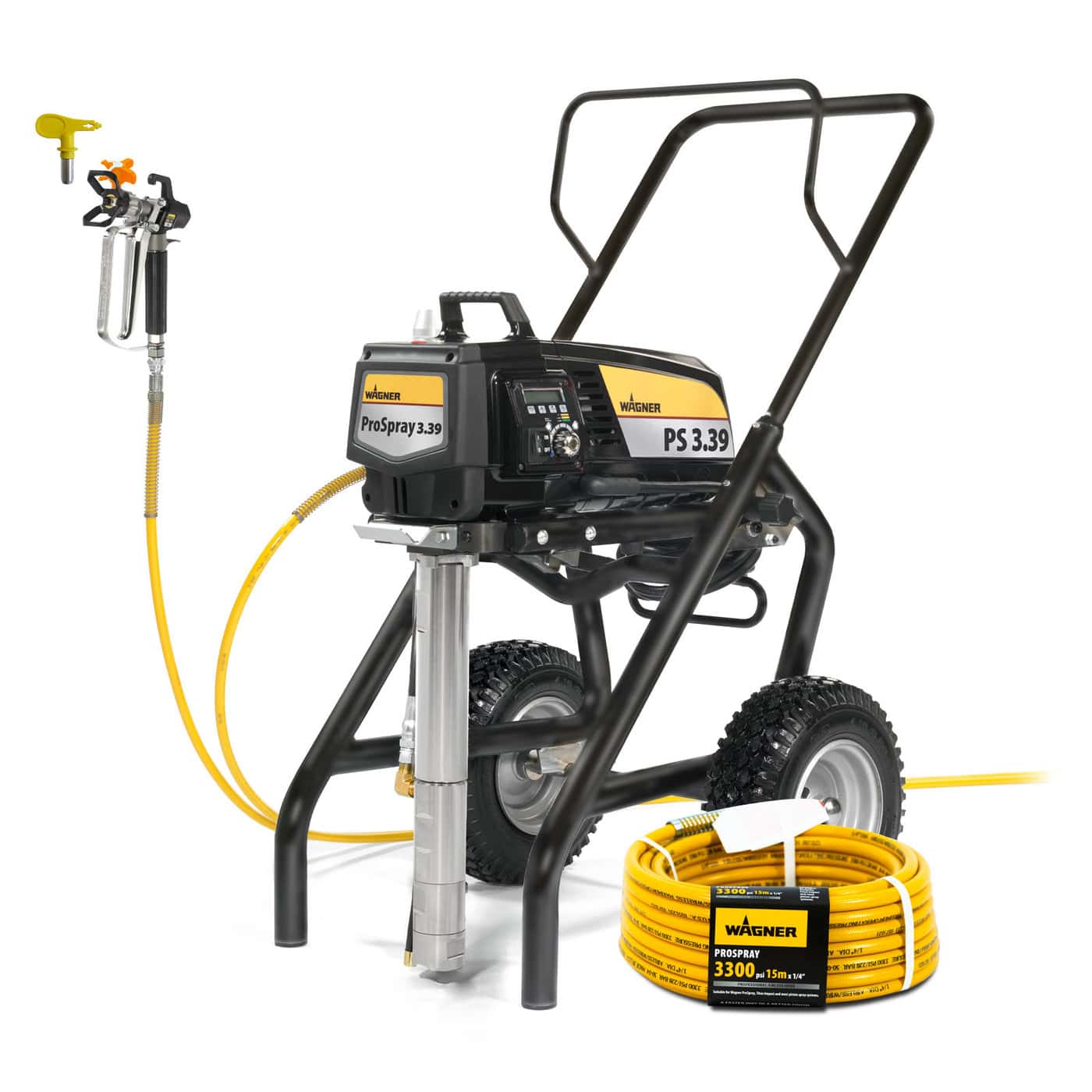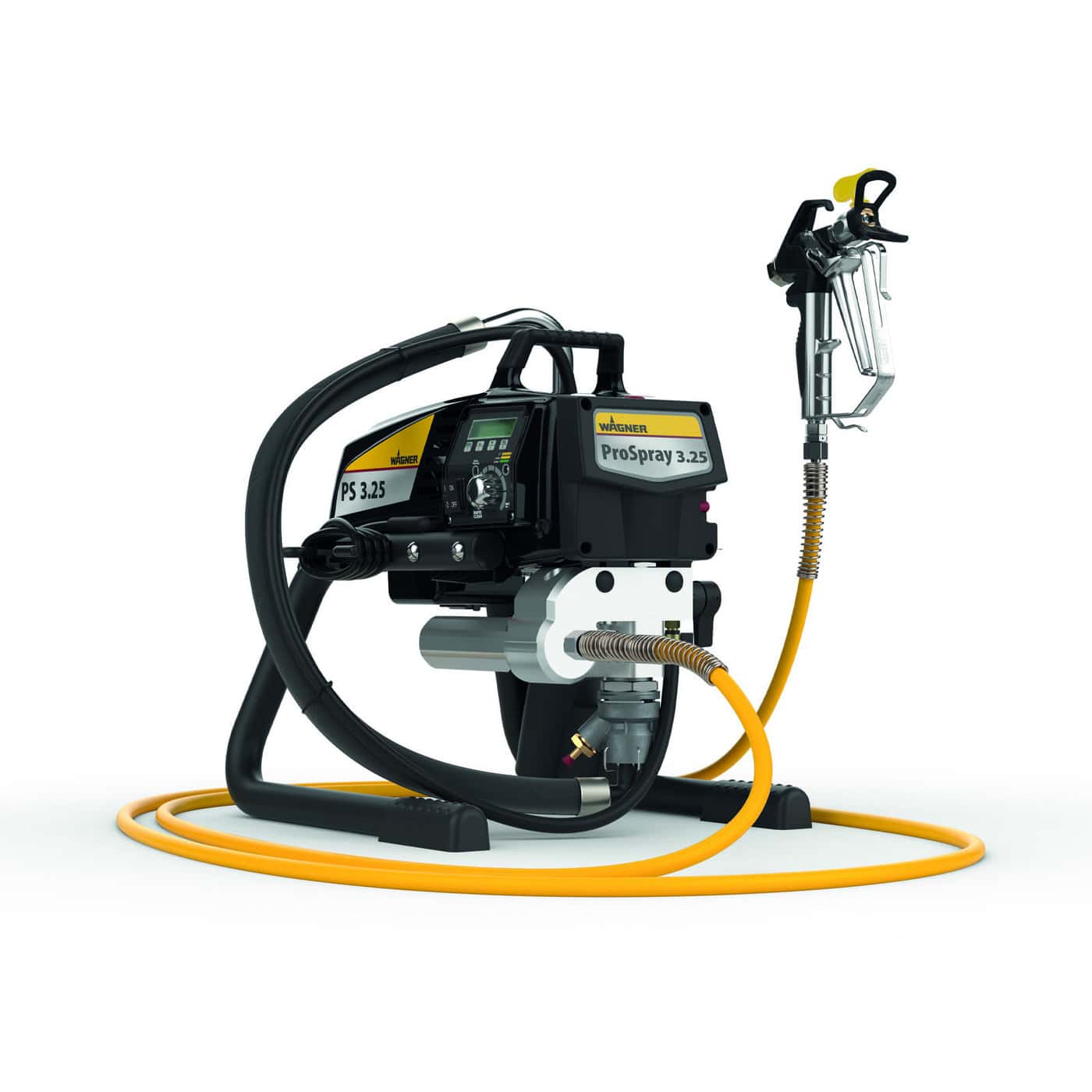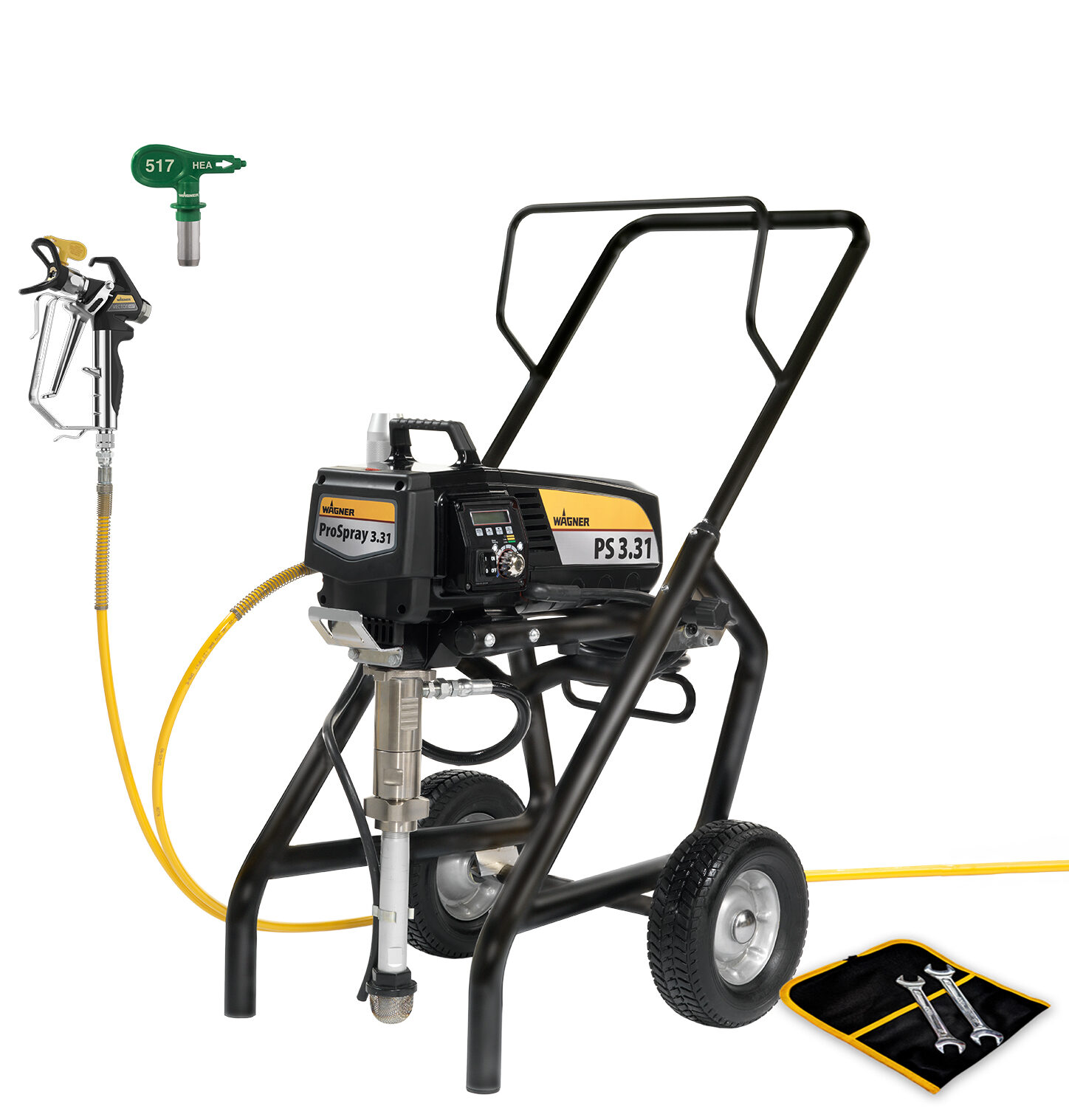
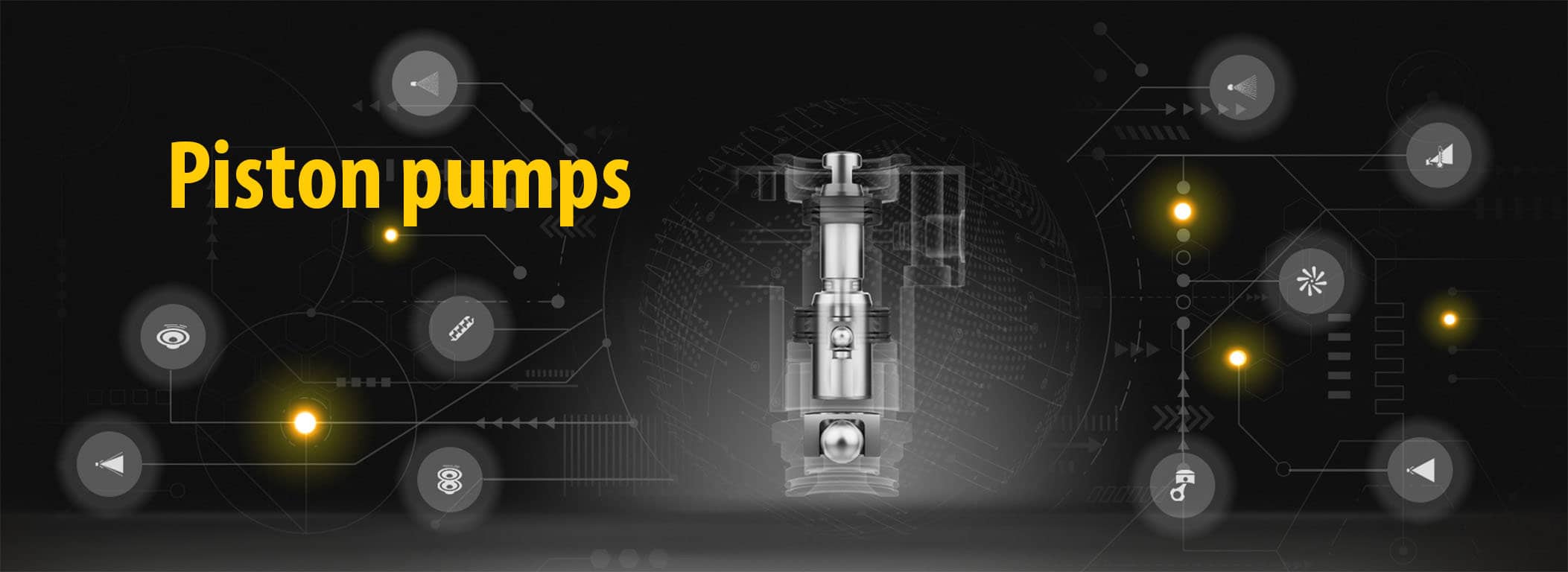
Piston pump from WAGNER: function, areas of application, and advantages
WAGNER offers piston pumps with three different drive systems: electric, petrol-driven, or pneumatic.
Electric/Petrol piston pump
The hydraulic piston pump can deliver more and is ideal for materials with higher viscosity. However, if you’re working with materials of medium viscosity, the electrically powered model with its compact size is more than enough.
Pneumatic piston pump
The pneumatic piston pump is designed to be explosion-protected, making it suitable for use in workshops and other similar settings.
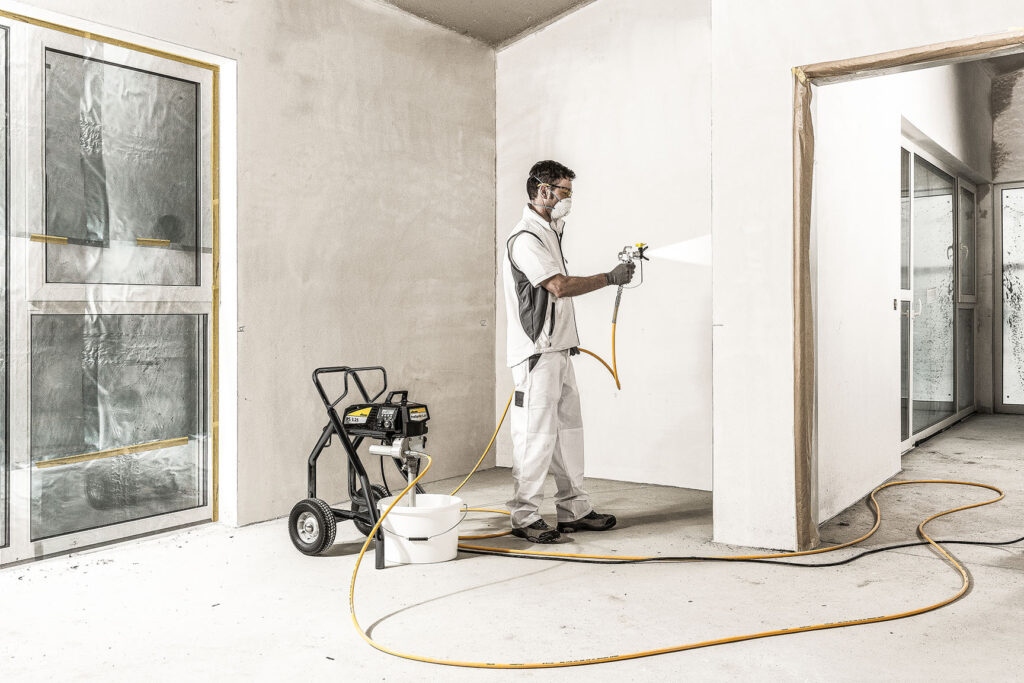
Piston pump advantages
If you require a pump that can efficiently handle highly viscous materials, look no further than the piston pump. It boasts exceptional suction performance and delivery rate, making it an ideal choice for heavy fluids. Its durable construction ensures a long lifespan, and since it doesn’t operate continuously, wearable parts have a longer lifespan.
The piston pump’s high material pressure and large volume allow for the use of long hoses, reducing the frequency of carrying containers. Our team has ensured that the pump’s housing is lightweight yet robust, making it suitable for harsh environments and construction sites.
Areas of application for the piston pump: Which materials can be processed?
The piston pump has a wide range of applications. From low-viscosity materials such as glazes to high-viscosity and highly-filled materials for outdoor use: basically, anything is possible.
The following can be processed:
- Varnishes and glazes
- Dispersion paints
- Latex paints
- Flame retardants
- Thick coating materials
- Zinc powder paints
- Iron mica paints
- Airless spraying fillers
- Corrosion protection
- Water-proofing of buildings
- Bitumen and bitumen-like coating materials
- Fabric adhesives
- Sealants
- Plasters (filled) and others.
We offer both low and high-viscosity piston pumps. Our ProSpray 3.20 is perfect for low-viscosity substances, while the HeavyCoat 950E is ideal for high-viscosity materials.


Which users and which applications is the piston pump suitable for?
This top-of-the-line piston pump is capable of handling a vast array of materials, from paints to coatings, plasters, and adhesives, making it the perfect tool for professional painting businesses. Its highly efficient spraying process not only saves time but also reduces material consumption, making it the preferred choice over other application methods. WAGNER offers piston pump devices in both electric and petrol options, allowing for easy conversion between the two for maximum flexibility on construction sites. Even smaller devices are suitable for DIY projects around the house, such as exterior painting or treating patios and gardens. Trust in the versatility and effectiveness of this piston pump for all your material application needs.

Double Diaphragm
The self-priming double diaphragm pump has not one but two diaphragms. These are connected to a piston rod and move together. Since it is a compressed air diaphragm pump, it is driven by compressed air (as the name suggests). Therefore, with each stroke of the piston, the pumped medium is simultaneously sucked in and delivered through the diaphragms, and this takes place with even less pulsation.

Diaphragm
A diaphragm pump uses a hydraulic piston to move a flexible diaphragm, which creates a vacuum that draws material into the pump. The material is then forced into a hose for transportation. This method is efficient for moving liquids, gases, and solids, and can handle large volumes of material thanks to the hydraulic piston.
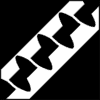
Screw
With the screw pump, the material is delivered not by pressure but rather by displacement. Even the thickest, most highly viscous materials can be conveyed and sprayed.

Turbine
XVLP and HVLP technologies are not pumps. Here, air pressure is used to atomise the material in a low-pressure process, so these are turbines. Low viscos materials can be sprayed with them.

 AUD
AUD  NZD
NZD
